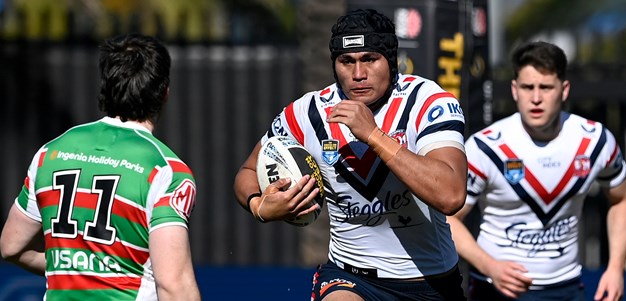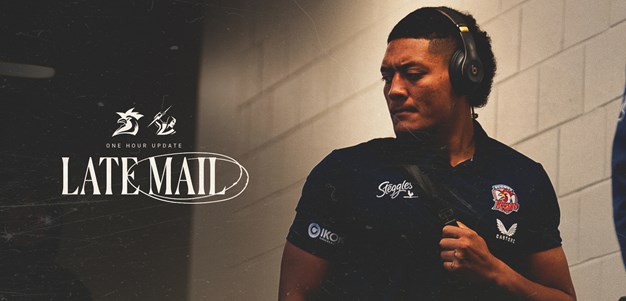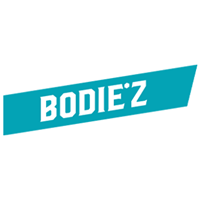Life-long Sydney Roosters fan Alan Katzmann has joined the Roosters.com.au team for the 2013 season and will contribute regular opinion pieces on subjects of interest to our supporters, and league followers in general.
A 12-year Member and Eastern Suburbs local, Alan is one of the tricolours most passionate followers and a proud member of the recently established Jack Gibson Club.
As we approach the first of our trial matches for 2013, there are many reasons for Rooster fans to look forward to the new season with great optimism. We have strengthened our roster, both in quality and quantity, and from all reports our squad has been performing exceptionally on the training field. We also have on that roster some of the most promising youngsters in the game, many of whom have benefited greatly by the arduous off season they are coming off. Despite the long term injury to one of our most promising, Tautau Moga, we have a squad which is more than capable of being highly competitive with any of our rivals.
Simply place our best 17 and any other teams best 17 in a 34 man squad and tell me that in most cases you cant find a majority of Rooster players to fill such a hypothetical mixed team.
However, a competitive roster is just one ingredient toward a successful season. Having won less than 40% of our matches over the past two seasons there are still many areas in which we must to improve before we can once again claim a position amongst the games elite teams. Today I write of six factors that I will be looking for in season 2013, and how they may impact on our seasons prospects.
Acceptable completion rates
The Roosters had the dubious distinction of being the only team for two consecutive seasons (2011-12) to have a completion rate under 70 per cent. Completion rates of around 75 per cent are more common for premiership contenders. Obviously the Roosters have suffered in recent years, fielding a very young and somewhat inexperienced lineup, particularly in 2012, and this has undoubtedly contributed to these unwanted statistics. However, in 2013, the Roosters should have seven players with 100-plus NRL games in its squad, plus seasoned campaigners in Jake Friend (93 games), James Maloney (79), Sonny Bill Williams (73) and Jared Waerea-Hargreaves (69) set to pass the century mark over the next two seasons. Greater attention to detail and a less frantic attitude will assist greatly in improving these completion rates.
Building pressure and earning repeat sets would allow our players to be less fatigued and subsequently less likely to make errors. We earned 30 fewer line dropouts than Melbourne over the past two years during regular season games, so that is one area that we can certainly improve in. The addition of James Maloney to the roster should benefit us greatly in this.
How the Roosters fare with our completion rates could well determine our fate in 2013.
An improved defence
The Roosters conceded 196 tries in their 48 matches (4.08 per game) over the past two seasons, including 110 tries in 2012 (4.58 per game). Conversely, 2012 champions Melbourne conceded just 118 tries in their 48 regular season games (2.46 per game) over the same period. Only Canberra (206) and Parramatta (211) have conceded more tries than the Roosters over the past two seasons, and this is another area that we must improve on dramatically if we are to be successful this year.
The two teams that conceded the fewest tries in the regular rounds of 2012 played in the grand final. Im told Head Coach Trent Robinson and his assistants have spent considerable time during the off season honing the defensive skills of our squad, not just as individuals but more importantly as a team. Being in the right position to make the tackle and communicating effectively with your teammates is what good defensive teams work on constantly. A greater commitment in this area would avoid the type of defensive lines that allowed tries like the one scored by Souths in the 80th minute of Round 19 last year which enabled them to pinch a last- gasp 24-22 win. No Rooster supporter would wish to go through that last two minutes ever again. If we could to reduce the number of tries conceded per game to below three, then the Roosters will challenge for a Top 4 spot.
Two quality strike centres
In 2013 the Roosters will have the personnel to attack proficiently on both sides of the field, and in particular to utilise the talents of two of the finest attacking centres in the game in Shaun Kenny-Dowall (right centre) and Michael Jennings (left centre). The similarities between the careers of these two players are quite extraordinary. Both were born in the first third of 1988 and both made their NRL debuts in 2007. They were both graduates of the NSW Under 18 SG Ball competition and in fact played against each other in a junior representative fixture back in October 2006 when Jennings played for the touring NSW Under 18s against Kenny Dowalls Junior Kiwis.
They have both played exactly 122 first grade games. Kenny-Dowall has scored 75 NRL tries while Jennings has scored 71. They have both played Test football.
No other team in the NRL can boast two strike centres of this quality. Therefore, giving these players quality ball in space will be critical in maximising our scoring opportunities. This will be the challenge for our inside backs and second rowers, and whether it is on an early shift or a surprise last tackle play, we must not waste the chances to get these players one on one with their opposition defender. Hopefully our wingers and inside men will continually push up in support and ensure that we make the most of any line breaks created by these two players.
A try-scoring winger
Since Amos Roberts left for Wigan after the 2006 season, only one Rooster winger (Shaun Kenny-Dowall in 2008) has scored 12 or more tries in a season. It is reasonable to think, though, that in Daniel Tupou the Roosters now have a try-scoring winger capable of crossing the line at regular intervals. In 25 matches for Newtown last season he scored 21 tries, and in just his second career NRL match (of three) last season he scored three spectacular tries against Wests Tigers in Round 25. He was selected in the 2012 NSW Cup team of the year and capped off his first year with the Roosters with a grand final win with Newtown in the NSW Cup.
With another off season behind him, this 195cm (6ft 5in) 21 year old is set for a big year at the end of a right side attack of Sonny Bill Williams and Shaun Kenny-Dowall. He will be a great target for us deep in the opposition quarter with his outstanding ability to leap above defenders, and if he remains fit I predict he will not just be the Roosters leading try scorer in 2013 but among the leading try scorers in the competition.
The next step for Jake Friend
Remarkably, the 2011 Jack Gibson medallist Jake Friend, having just turned 23, is about to embark on his sixth season in the NRL. He has now played 93 NRL matches since his debut as an 18 year old back in 2008, and was a member of the Roosters 2010 grand final team. One of four vice-captains, and contracted until the end of 2015, Jake is now firmly entrenched as a key member of the Roosters squad. Out of all the players in that squad he is one player that we would struggle to replace if he was struck down by injury for any significant length of time. So while he is highly regarded by all at the Roosters, he has yet to have his talents fully recognised by a wider League audience.
2013 will, in all probability, determine whether Jake continues to be a fine club player but with a moderate NRL profile, or gains greater recognition and becomes the obvious heir apparent to Cameron Smiths Queensland No. 9 jumper. His dummy half decision-making will be closely monitored by those who feel he has both the talent and the work ethic to take his game to a higher level. It will also be crucial in ensuring the Roosters return to their rightful position among the better performing NRL clubs.
Broncos hooker Andrew McCullough was recently chosen ahead of Jake in the QAS Emerging Origin squad, a group that included Roosters Marty Kennedy and Aidan Guerra, so he has some way to go, but there are plenty at the Roosters who will be prepared to say that he is more than capable of playing senior representative football.
Roosters at the World Cup
The 2013 League season will culminate with the Rugby League World Cup in England and Wales, where defending champions New Zealand have been posted as second favourites for the tournament behind the 2008 runners-up Australia.
In January, four Rooster players (Jared Waerea-Hargreaves, Shaun Kenny-Dowall, Frank-Paul Nuuausala and Roger Tuivasa-Sheck) were part of a 32-man heritage camp as the Kiwis ramped up their preparation for their Cup defence. Sonny Bill Williams was not part of this camp but he will of course be the first man picked for New Zealand if available, and its hard to imagine that he wouldnt want to take the opportunity to try and add a Rugby League World Cup medal to his already impressive list of sporting achievements.
With a big season for the Roosters, all these players are capable of making the final 24-man squad for the tournament, so for JWH, SKD, FPN, RTS and SBW there is an additional, and pretty special, incentive, to make 2013 a year to remember. If they can also play major roles in lifting the Sydney Roosters into the finals and beyond, they will make 2013 memorable for all of us.
NB: The views expressed in this article do not necessarily represent the views of Roosters.com.au, the Sydney Roosters and its board of Directors or staff.
A 12-year Member and Eastern Suburbs local, Alan is one of the tricolours most passionate followers and a proud member of the recently established Jack Gibson Club.
As we approach the first of our trial matches for 2013, there are many reasons for Rooster fans to look forward to the new season with great optimism. We have strengthened our roster, both in quality and quantity, and from all reports our squad has been performing exceptionally on the training field. We also have on that roster some of the most promising youngsters in the game, many of whom have benefited greatly by the arduous off season they are coming off. Despite the long term injury to one of our most promising, Tautau Moga, we have a squad which is more than capable of being highly competitive with any of our rivals.
Simply place our best 17 and any other teams best 17 in a 34 man squad and tell me that in most cases you cant find a majority of Rooster players to fill such a hypothetical mixed team.
However, a competitive roster is just one ingredient toward a successful season. Having won less than 40% of our matches over the past two seasons there are still many areas in which we must to improve before we can once again claim a position amongst the games elite teams. Today I write of six factors that I will be looking for in season 2013, and how they may impact on our seasons prospects.
Acceptable completion rates
The Roosters had the dubious distinction of being the only team for two consecutive seasons (2011-12) to have a completion rate under 70 per cent. Completion rates of around 75 per cent are more common for premiership contenders. Obviously the Roosters have suffered in recent years, fielding a very young and somewhat inexperienced lineup, particularly in 2012, and this has undoubtedly contributed to these unwanted statistics. However, in 2013, the Roosters should have seven players with 100-plus NRL games in its squad, plus seasoned campaigners in Jake Friend (93 games), James Maloney (79), Sonny Bill Williams (73) and Jared Waerea-Hargreaves (69) set to pass the century mark over the next two seasons. Greater attention to detail and a less frantic attitude will assist greatly in improving these completion rates.
Building pressure and earning repeat sets would allow our players to be less fatigued and subsequently less likely to make errors. We earned 30 fewer line dropouts than Melbourne over the past two years during regular season games, so that is one area that we can certainly improve in. The addition of James Maloney to the roster should benefit us greatly in this.
How the Roosters fare with our completion rates could well determine our fate in 2013.
An improved defence
The Roosters conceded 196 tries in their 48 matches (4.08 per game) over the past two seasons, including 110 tries in 2012 (4.58 per game). Conversely, 2012 champions Melbourne conceded just 118 tries in their 48 regular season games (2.46 per game) over the same period. Only Canberra (206) and Parramatta (211) have conceded more tries than the Roosters over the past two seasons, and this is another area that we must improve on dramatically if we are to be successful this year.
The two teams that conceded the fewest tries in the regular rounds of 2012 played in the grand final. Im told Head Coach Trent Robinson and his assistants have spent considerable time during the off season honing the defensive skills of our squad, not just as individuals but more importantly as a team. Being in the right position to make the tackle and communicating effectively with your teammates is what good defensive teams work on constantly. A greater commitment in this area would avoid the type of defensive lines that allowed tries like the one scored by Souths in the 80th minute of Round 19 last year which enabled them to pinch a last- gasp 24-22 win. No Rooster supporter would wish to go through that last two minutes ever again. If we could to reduce the number of tries conceded per game to below three, then the Roosters will challenge for a Top 4 spot.
Two quality strike centres
In 2013 the Roosters will have the personnel to attack proficiently on both sides of the field, and in particular to utilise the talents of two of the finest attacking centres in the game in Shaun Kenny-Dowall (right centre) and Michael Jennings (left centre). The similarities between the careers of these two players are quite extraordinary. Both were born in the first third of 1988 and both made their NRL debuts in 2007. They were both graduates of the NSW Under 18 SG Ball competition and in fact played against each other in a junior representative fixture back in October 2006 when Jennings played for the touring NSW Under 18s against Kenny Dowalls Junior Kiwis.
They have both played exactly 122 first grade games. Kenny-Dowall has scored 75 NRL tries while Jennings has scored 71. They have both played Test football.
No other team in the NRL can boast two strike centres of this quality. Therefore, giving these players quality ball in space will be critical in maximising our scoring opportunities. This will be the challenge for our inside backs and second rowers, and whether it is on an early shift or a surprise last tackle play, we must not waste the chances to get these players one on one with their opposition defender. Hopefully our wingers and inside men will continually push up in support and ensure that we make the most of any line breaks created by these two players.
A try-scoring winger
Since Amos Roberts left for Wigan after the 2006 season, only one Rooster winger (Shaun Kenny-Dowall in 2008) has scored 12 or more tries in a season. It is reasonable to think, though, that in Daniel Tupou the Roosters now have a try-scoring winger capable of crossing the line at regular intervals. In 25 matches for Newtown last season he scored 21 tries, and in just his second career NRL match (of three) last season he scored three spectacular tries against Wests Tigers in Round 25. He was selected in the 2012 NSW Cup team of the year and capped off his first year with the Roosters with a grand final win with Newtown in the NSW Cup.
With another off season behind him, this 195cm (6ft 5in) 21 year old is set for a big year at the end of a right side attack of Sonny Bill Williams and Shaun Kenny-Dowall. He will be a great target for us deep in the opposition quarter with his outstanding ability to leap above defenders, and if he remains fit I predict he will not just be the Roosters leading try scorer in 2013 but among the leading try scorers in the competition.
The next step for Jake Friend
Remarkably, the 2011 Jack Gibson medallist Jake Friend, having just turned 23, is about to embark on his sixth season in the NRL. He has now played 93 NRL matches since his debut as an 18 year old back in 2008, and was a member of the Roosters 2010 grand final team. One of four vice-captains, and contracted until the end of 2015, Jake is now firmly entrenched as a key member of the Roosters squad. Out of all the players in that squad he is one player that we would struggle to replace if he was struck down by injury for any significant length of time. So while he is highly regarded by all at the Roosters, he has yet to have his talents fully recognised by a wider League audience.
2013 will, in all probability, determine whether Jake continues to be a fine club player but with a moderate NRL profile, or gains greater recognition and becomes the obvious heir apparent to Cameron Smiths Queensland No. 9 jumper. His dummy half decision-making will be closely monitored by those who feel he has both the talent and the work ethic to take his game to a higher level. It will also be crucial in ensuring the Roosters return to their rightful position among the better performing NRL clubs.
Broncos hooker Andrew McCullough was recently chosen ahead of Jake in the QAS Emerging Origin squad, a group that included Roosters Marty Kennedy and Aidan Guerra, so he has some way to go, but there are plenty at the Roosters who will be prepared to say that he is more than capable of playing senior representative football.
Roosters at the World Cup
The 2013 League season will culminate with the Rugby League World Cup in England and Wales, where defending champions New Zealand have been posted as second favourites for the tournament behind the 2008 runners-up Australia.
In January, four Rooster players (Jared Waerea-Hargreaves, Shaun Kenny-Dowall, Frank-Paul Nuuausala and Roger Tuivasa-Sheck) were part of a 32-man heritage camp as the Kiwis ramped up their preparation for their Cup defence. Sonny Bill Williams was not part of this camp but he will of course be the first man picked for New Zealand if available, and its hard to imagine that he wouldnt want to take the opportunity to try and add a Rugby League World Cup medal to his already impressive list of sporting achievements.
With a big season for the Roosters, all these players are capable of making the final 24-man squad for the tournament, so for JWH, SKD, FPN, RTS and SBW there is an additional, and pretty special, incentive, to make 2013 a year to remember. If they can also play major roles in lifting the Sydney Roosters into the finals and beyond, they will make 2013 memorable for all of us.
NB: The views expressed in this article do not necessarily represent the views of Roosters.com.au, the Sydney Roosters and its board of Directors or staff.











